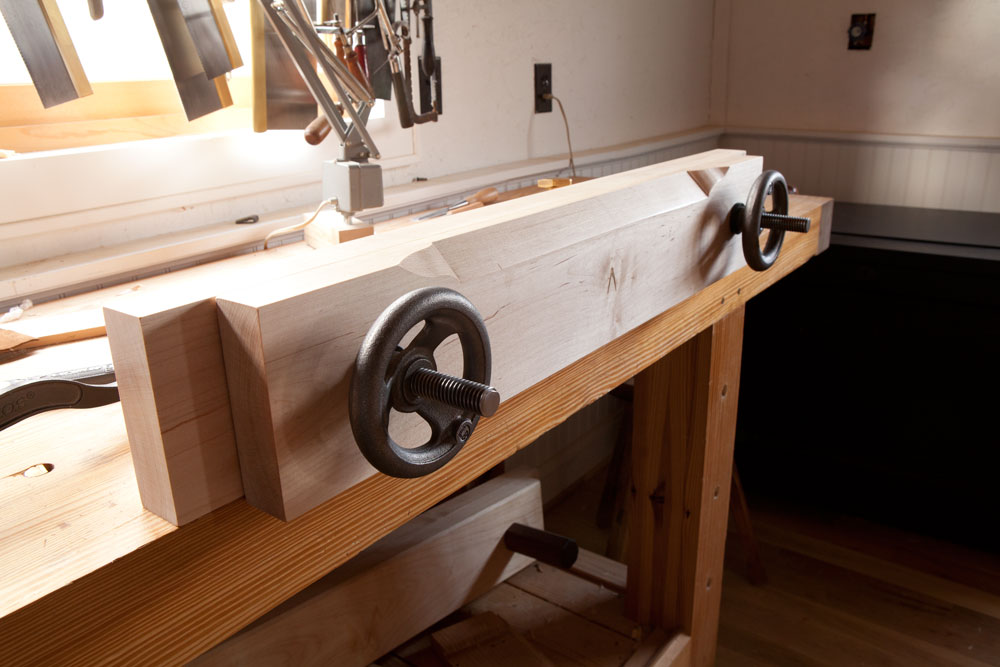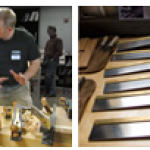We may receive a commission when you use our affiliate links. However, this does not impact our recommendations.
Most of us know Joseph Moxon as the author of “Mechanick Exercises” – a now-famous early work on everything from joinery to smithing. He also invented a vise that sits higher than your typical twin-screw and helps for cutting dovetails by hand. Christopher Schwarz helped bring both of these works – the book and the vise – back to light while he was on the staff here at Popular Woodworking. Thanks, Chris!

Joseph Moxon invented this style of vise. He also predicted the future of woodworking, if you ask me.
As you know, I am in the long and gradual process of building my woodworking skills while also coming up to speed with all the wonderful content Popular Woodworking has published throughout its history. (It’s only about four centuries worth of content, dating back to the Moxon era, so it shouldn’t take me too much longer.) Reading “Mechanick Exercises” this weekend, I came across some passages I hadn’t seen elsewhere, so I thought I’d share.
On forging edge tools:
He that will a good Edge win,
Must Forge thick and Grind thin.
I thought that was interesting. It made me think of Ron Hock’s blades, made today in northern California.
On what joinery really is (you may have seen this one before):
Joinery is an Art Manual, whereby several Pieces of Wood are so fitted and join’d together by Straight-line, Squares, Miters or any Bevel, that they shall seem one entire Piece.
The simplicity of that definition amazes me. It’s like Moxon was cutting right through all the clutter that exists today, and maybe in his own era as well.
But this is the quote that amazed me even more, on the same note:
These Lines I record so that others may more easily comprehend a Craft that owns several difficulties, but may yet be understood by All. There is no Doubt we shall come to Blows from Time to Time on whether the Bevel is best placed up or down for Paring, and similar Questions, and as Tools grow more powerful and mechanickal there shall no Doubt be many other Questions among those who practice the Craft. Yet let us maintain Sanity and not grow smaller of Mind in our Works.
I almost couldn’t believe how accurately Moxon portrayed the discussions you see today in online woodworking forums (and other places woodworkers gather).
And finally there was this sentence, deep in the chapter on “House-carpentry”:
When our Fore-fathers completed the Framing of the second Half of any House, their immediate Practice was to op’n a Cask of Ale, for the Remainder of the Building is exceeding simple and does not require much use of Brains or Mind.
–Dan Farnbach
p.s. – I’ll let you decide which of the quotes above I invented for April Fool’s Day. But here’s something that really is no joke. We are releasing a new value pack that is 100% video content. Most of us learn best by watching, rather than reading, and that’s what makes this value pack so valuable! Check it out in our store, and consider buying a set for yourself or a woodworker you know.
Here are some supplies and tools we find essential in our everyday work around the shop. We may receive a commission from sales referred by our links; however, we have carefully selected these products for their usefulness and quality.








Johann Sebastian Bach was once asked how he could play the keyboard instruments so effortlessly and well. He replied “There’s really nothing to it at all. You merely place your fingers on the right key at the right time and the instrument plays itself”.
Yup, that’s how it’s done…
Pretty sure Moxon didn’t invent that vise.